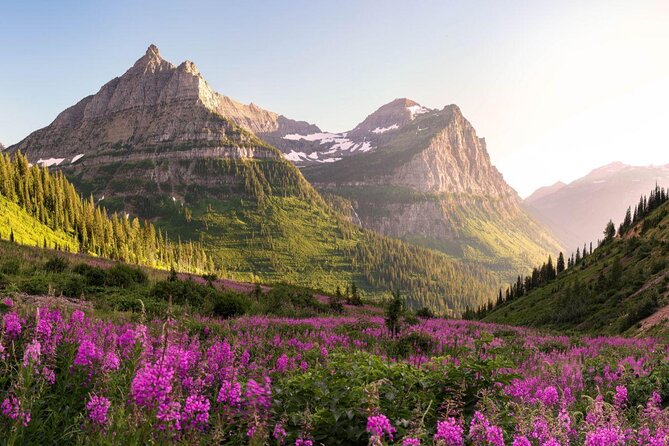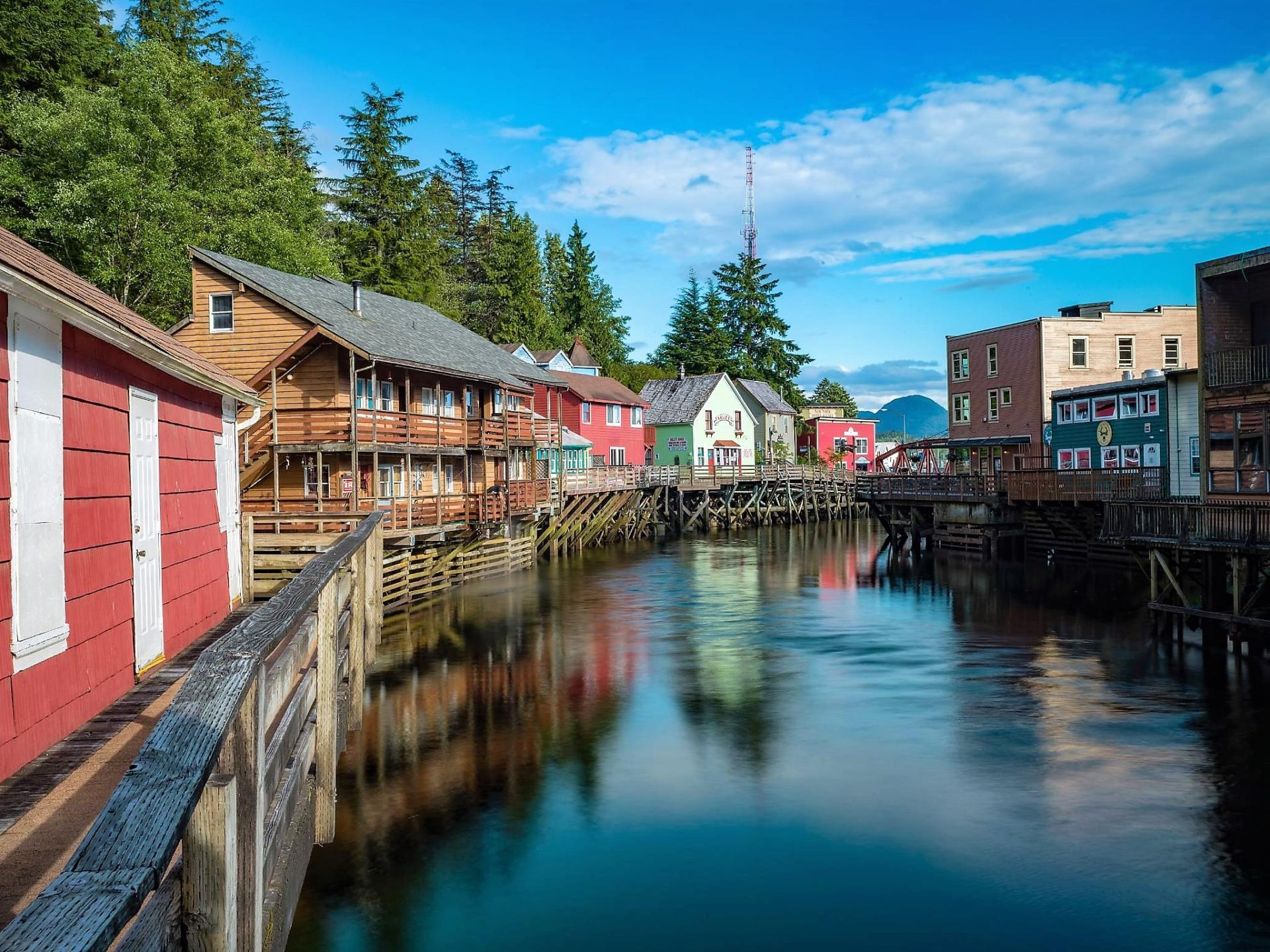ABOUT-ALASKA

Alaska is a non-contiguous U.S. state located in North America's northwest corner. Its eastern boundary is with Yukon and British Columbia in Canada. Its western maritime border is with the Chukotka Autonomous Okrug of Russia across the Bering Strait. Alaska is well-known for its vast open areas, abundant outdoor activities, and the native culture of the state. One of the greatest spots on Earth to see the Northern Lights is Alaska. Alaska is equidistant from much of Asia and Europe and is situated in the center of the Great Circle Route, which connects North America with Asia via air and water. There are eight different physiographic and environmental regions in Alaska.
TOURIST ATTRACTIONS

Fairbanks
Fairbanks is located in the Tanana Valley, along the Chena River, in the interior of Alaska. Providing opportunities for research and education, the University of Alaska Fairbanks is a significant institution in the city. The midnight sun, the northern lights, sometimes called the aurora borealis, and eternal sunsets and sunrises are some of Fairbanks' most well-known natural phenomena. The American senator and vice president, Charles W. Fairbanks, is the namesake of Fairbanks, established in 1901. The city is the nation's oldest major metropolis. The distance between the city's central business district and Fairbanks International Airport is three miles to the southwest.
Glacier Bay National Park and Preserve
UNESCO has recognized this national park, which is located northwest of Juneau, as a World Cultural Site. The park covers 3.3 million acres of rugged mountains, dynamic glaciers, temperate rainforests, wild coastlines, and deep, sheltered fjords. The National Park Service took over the responsibility of managing the protected area in collaboration with Hoonah and Yakutat Tlingit Native American organizations in 1994. The park occupies the northernmost section of the southeastern Alaska coastline between the Gulf of Alaska and Canada. Additionally, the park offers a unique variety of wildlife and a striking range of plant life, with flora, in particular, returning to a landscape long covered by ice.


Ketchikan
Ketchikan is situated in southern Alaska on Revillagigedo Island, which is a part of the Alexander Archipelago. It's renowned for its picturesque waterfront as well. It's well-recognized that Ketchikan is the global salmon capital. The Tongass and Cape Fox Tlingit Indians lived at this location as a fishing village. They called a nearby creek kitsch-hin, meaning "Thundering Wings of an Eagle." Because of its advantageous location at the southernmost point of the inner passage that connects Puget Sound to the Gulf of Alaska, Ketchikan is said to be the first city in Alaska.
Kenai Fjords National Park
Kenai National Park was established in 1980 to protect the fjords, glaciers, and coastal ecosystems of the hard icefield and the surrounding area. Kenai is renowned for its breathtaking mountain and ocean scenery and is home to one of the most varied ecosystems of any national park. Bear Glacier is the largest glacier in the Sonal Park, which consists of at least 38 other glaciers. The fjords are glacial valleys that have fallen below sea level due to a combination of land subsidence and rising sea levels.


Denali National Park
Denali National Park is known as Mount McKinley National Park. It is larger than the state of New Hampshire, with 6,045,153 acres, as the park and adjacent preserve. The landscape of Denali is composed of glaciers, snow, and bare rock, with deciduous taiga and tundra at medium elevations and forest at lower elevations. The park and preserve cover a substantial amount of the lower hills and outwash plains to the north of the mountains, as well as the center of the untamed Alaska Range.
INTERNATIONAL AIRPORTS IN ALASKA
WEATHER
Ocean currents impact Alaska's climate, which is well-known for being unpredictable. The first zone has average summer temperatures of around 40 to 60 °F (4 to 16 °C) and average winter temperatures of about 20 to 40 °F. It includes the southern coastal and southeastern regions of Alaska, the Gulf of Alaska islands, and the Aleutian Islands. Rainfall in this area ranges from 60 to 160 inches. A second climatic zone, the interior of Alaska, has a continental climate impacted by cold air from northern Canada and Siberia throughout the winter. A quantifiable quantity of permafrost has melted due to warming Alaska's environment.
BEST TIME TO TRAVEL
May through September is the most suitable period of year to visit Alaska. The warmest months are June through August, which is considered peak season. There's plenty to do in the summertime, including driving on Denali Park Road.
FAQs
Which month is the least expensive to fly to Alaska?
The cheapest month to fly to Alaska is January.
Where can I see polar bears?
Polar bears live in the northern latitudes. Polar bears can be found in Alaska throughout the winter months, as far south as St. Lawrence Island, and they even sometimes make their way to St. Matthew Island and the Kuskokwim Delta.
What are the transportation available in Alaska?
Alaska provides various transportation options, including rental vehicles, railroads (Alaska Railroad), buses, and domestic flights connecting cities.

Save up to 40% off! Exclusive call-only deals:
+1 (802) 222-6192
 Ted Stevens Anchorage
Ted Stevens Anchorage